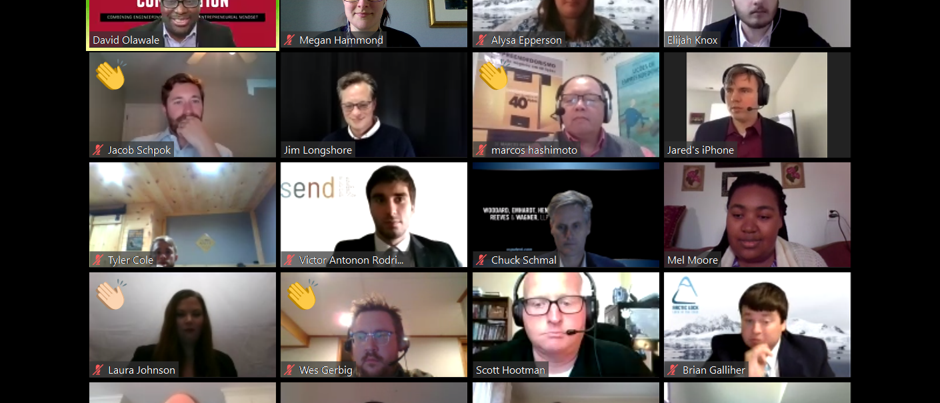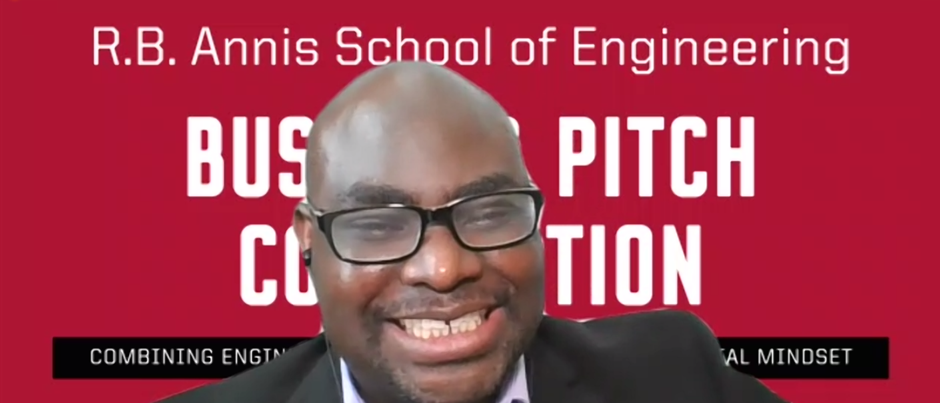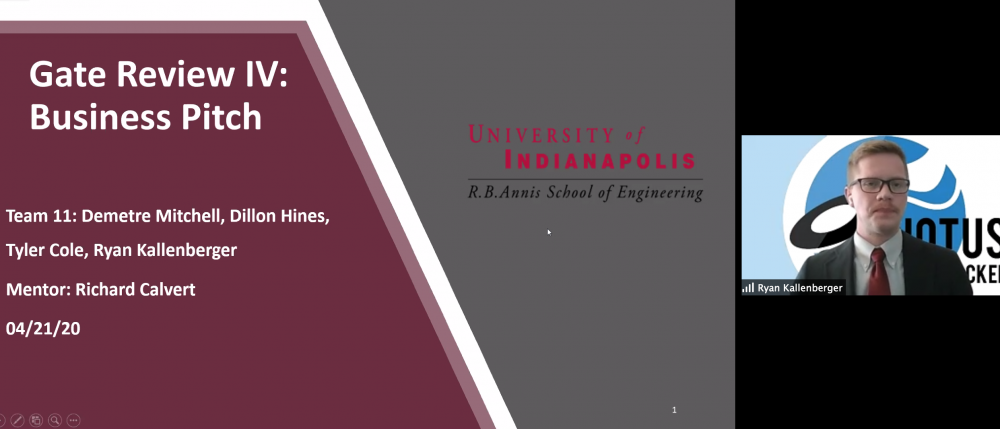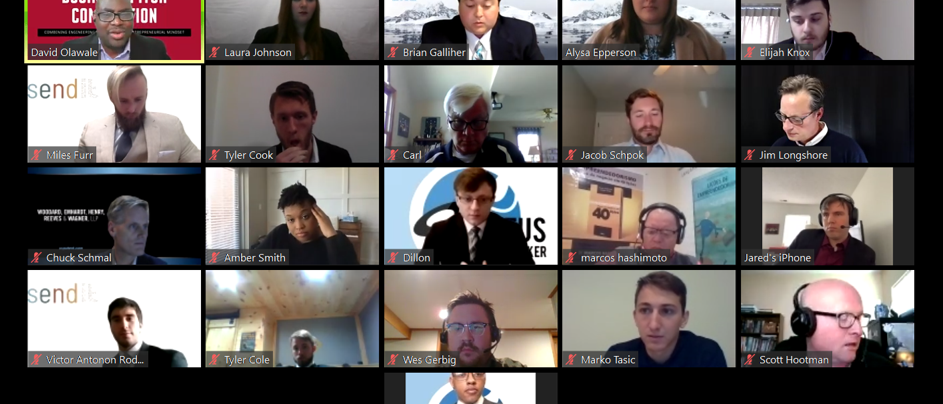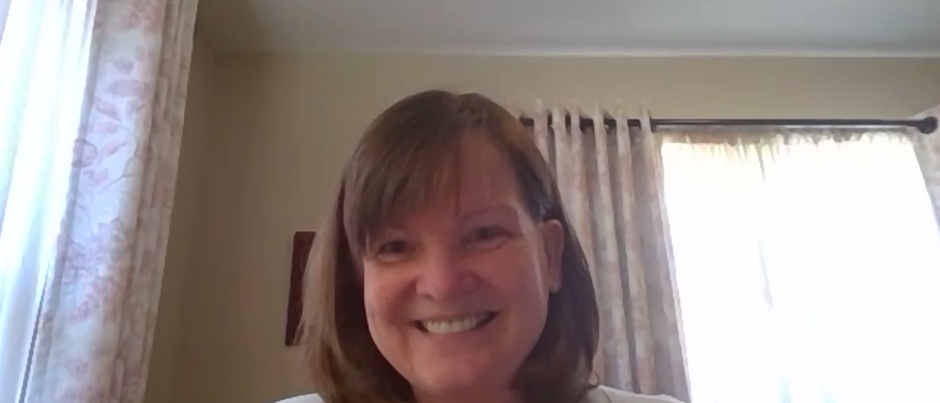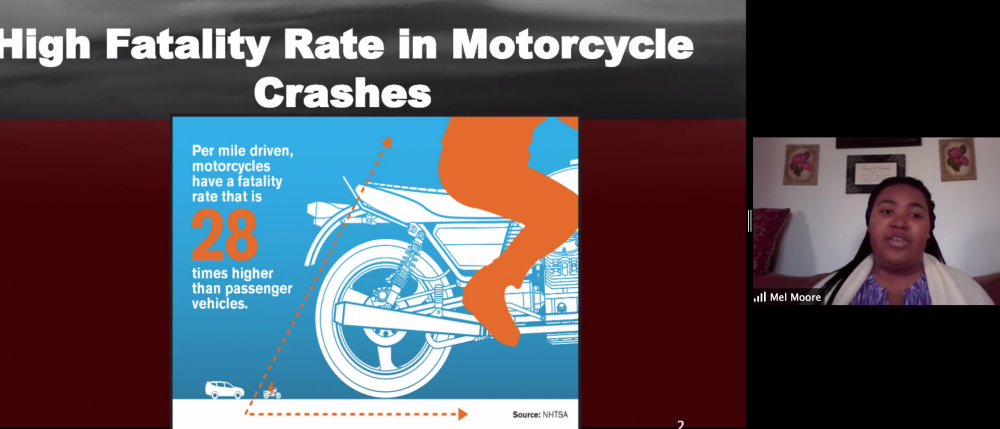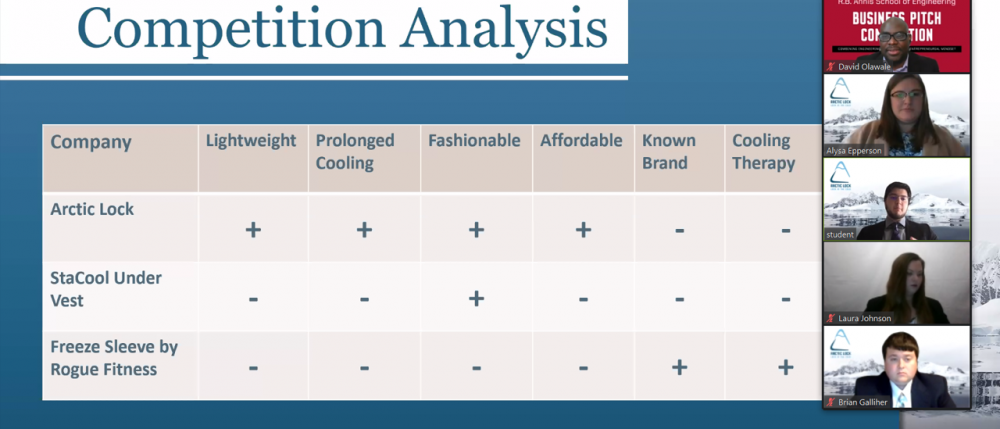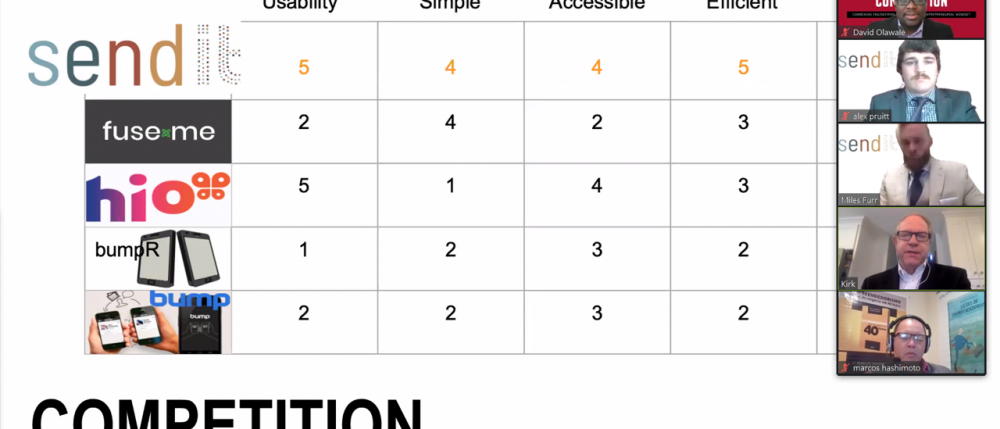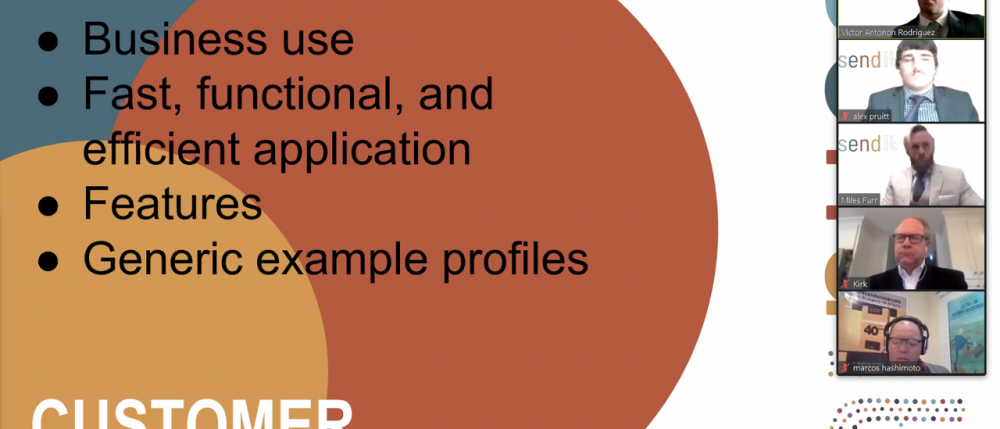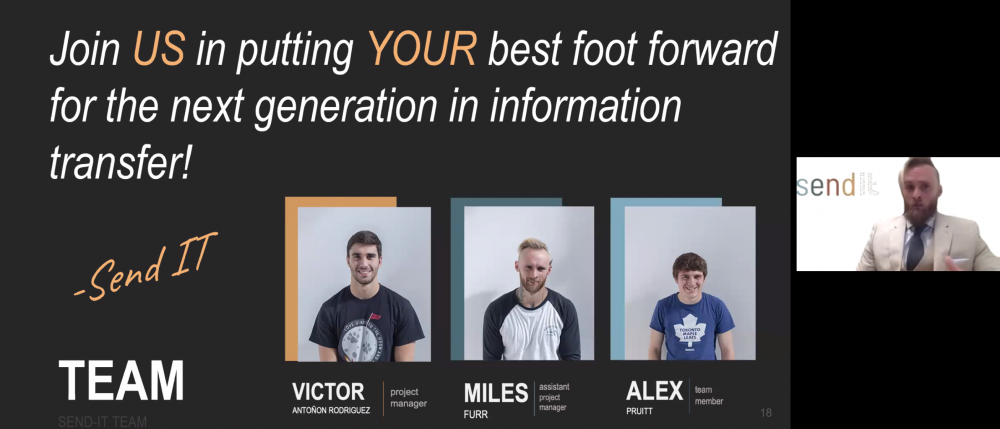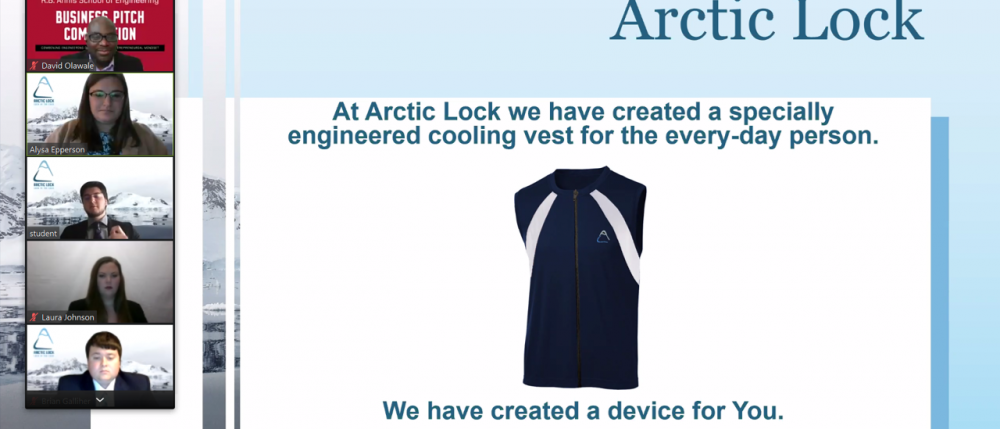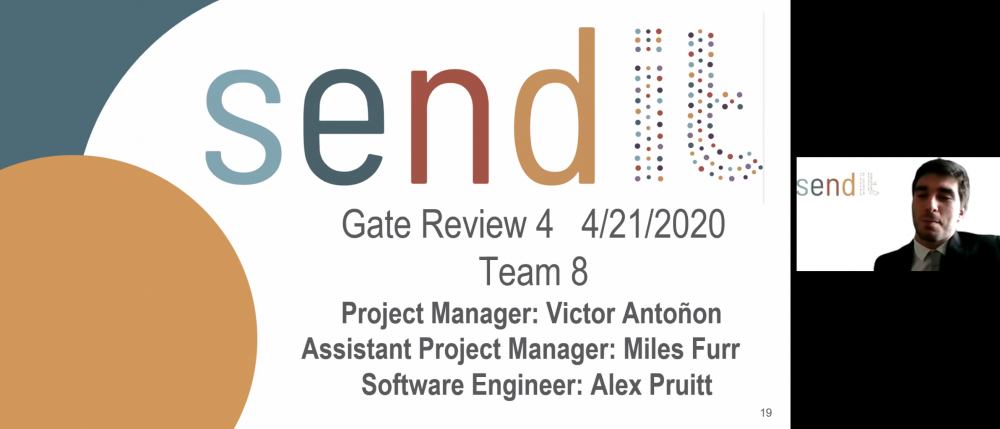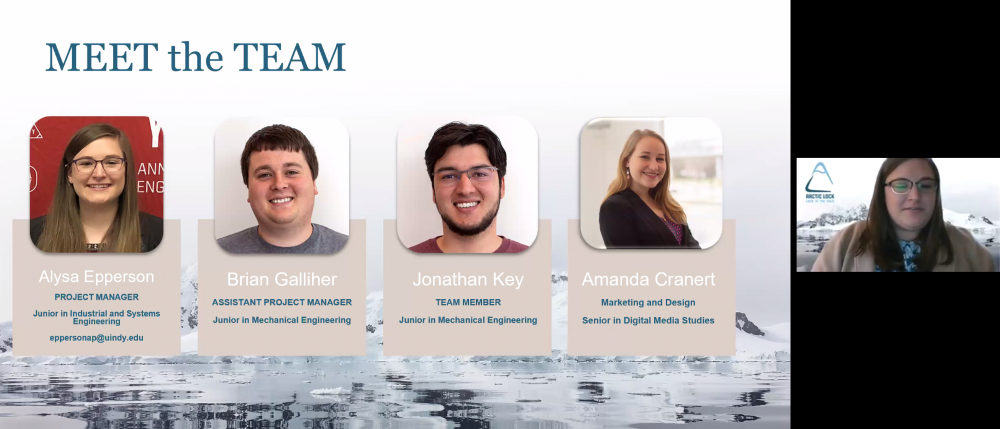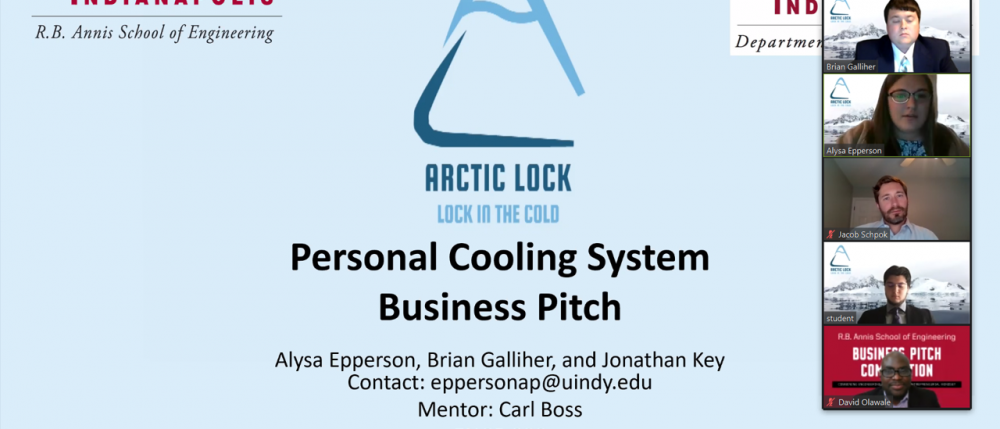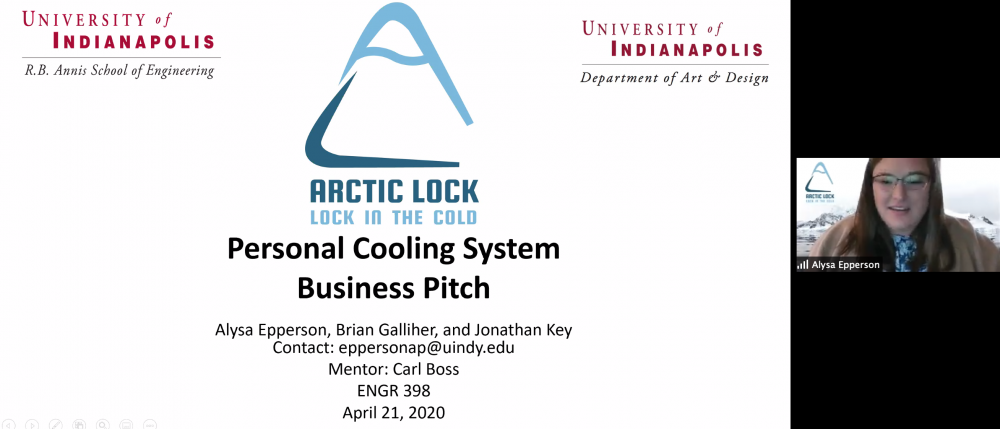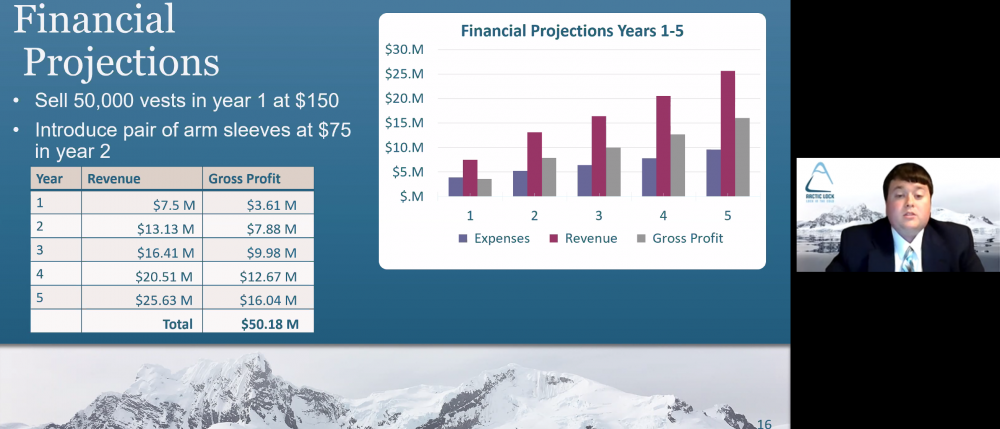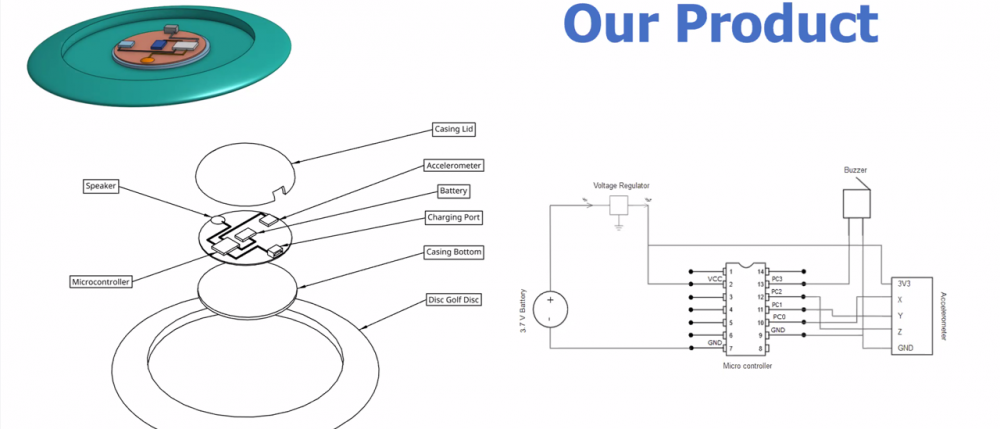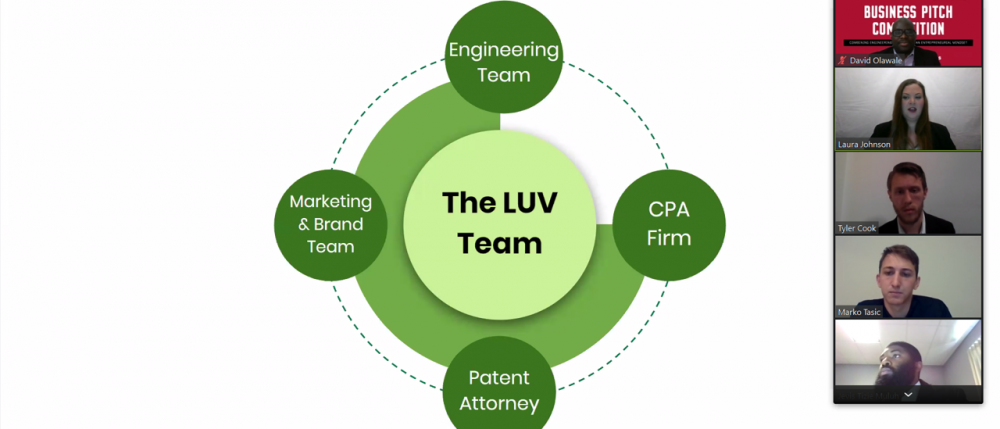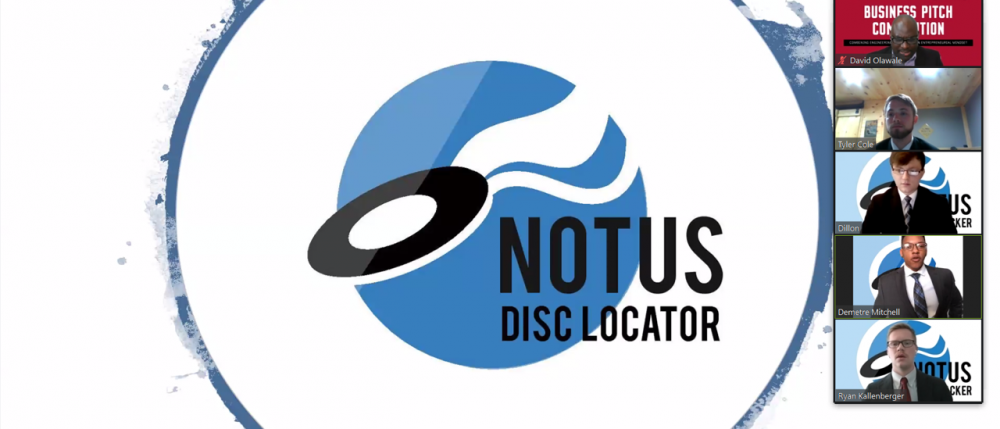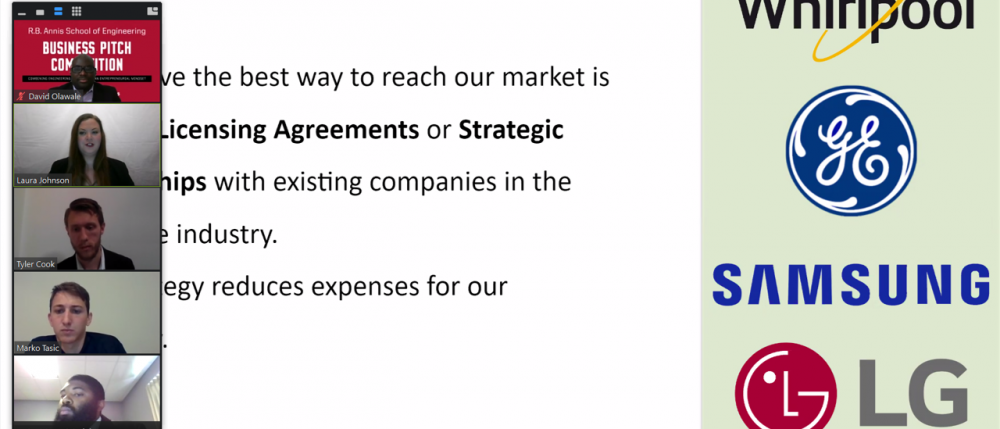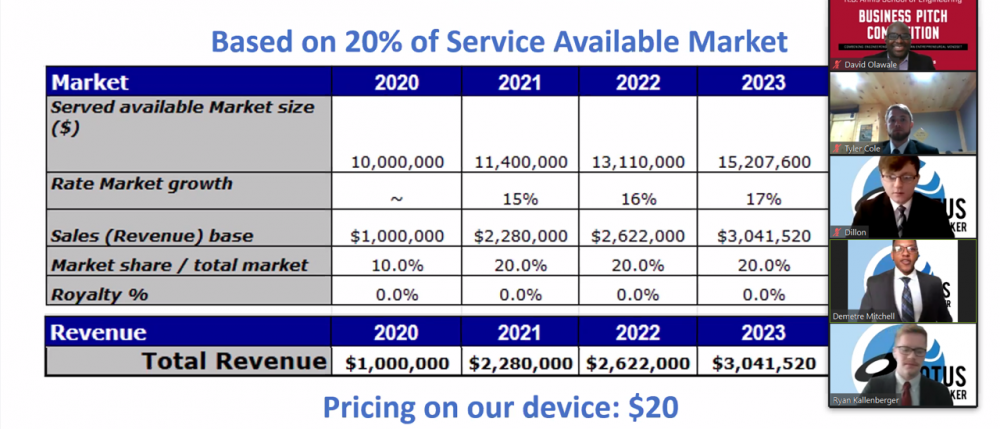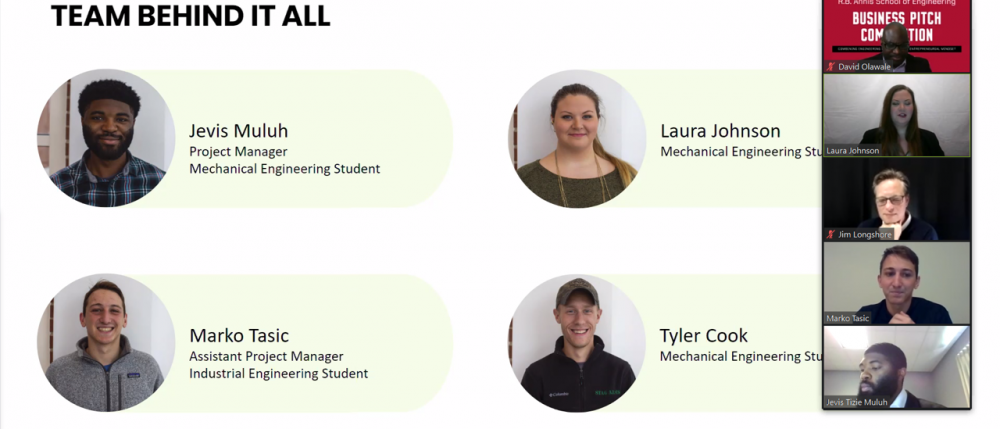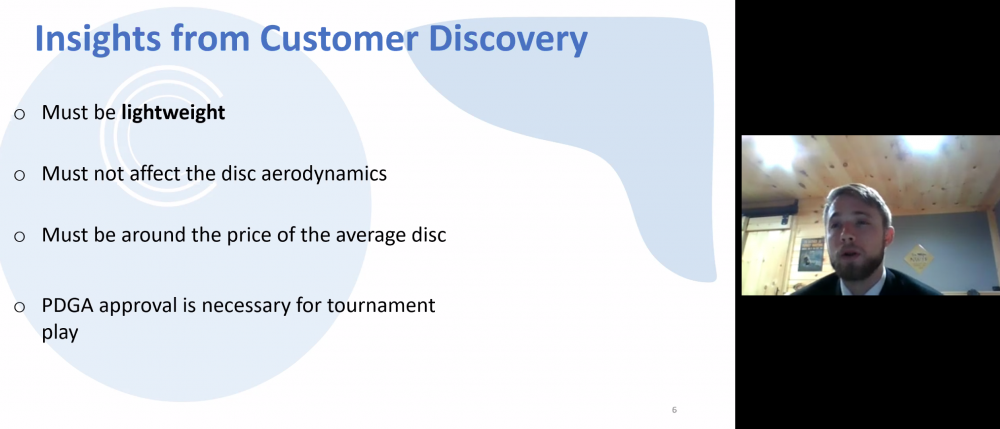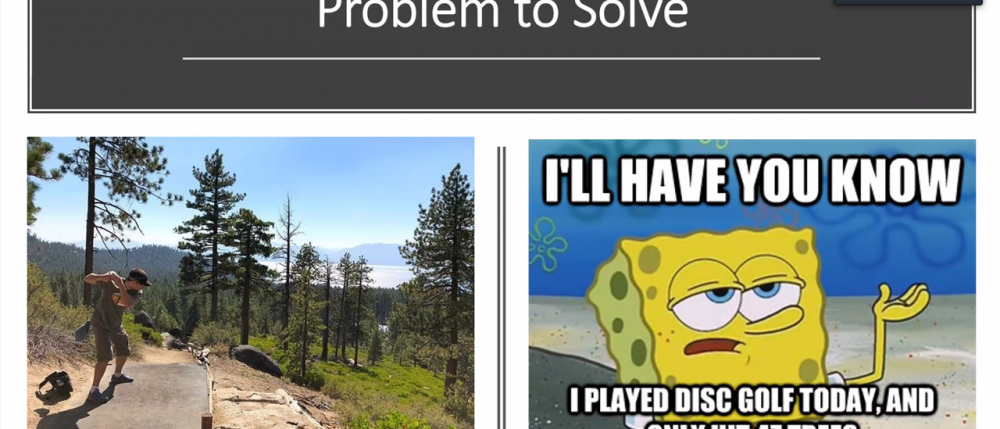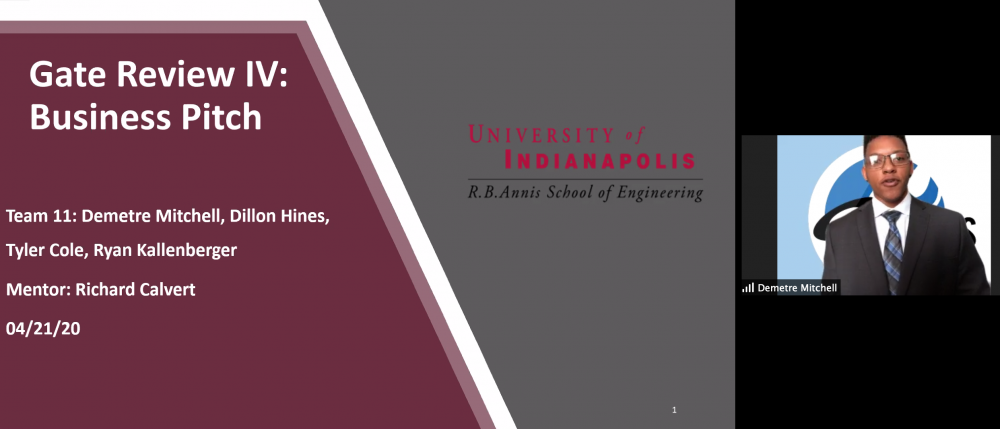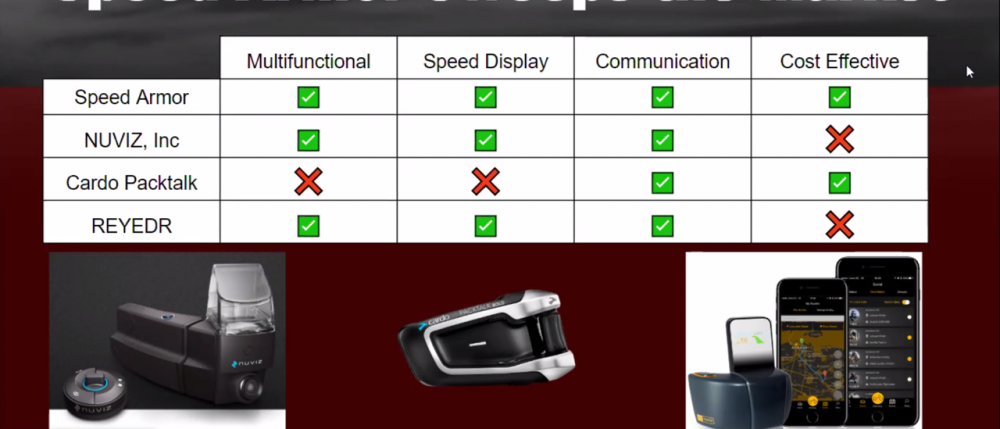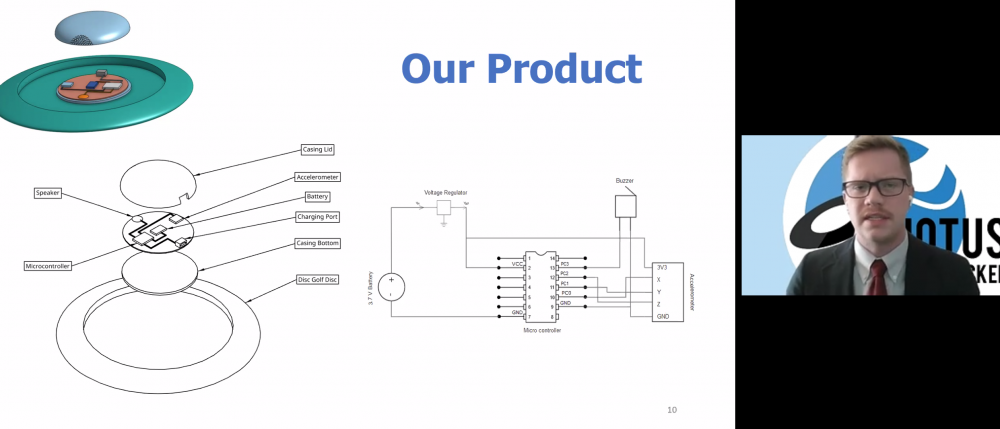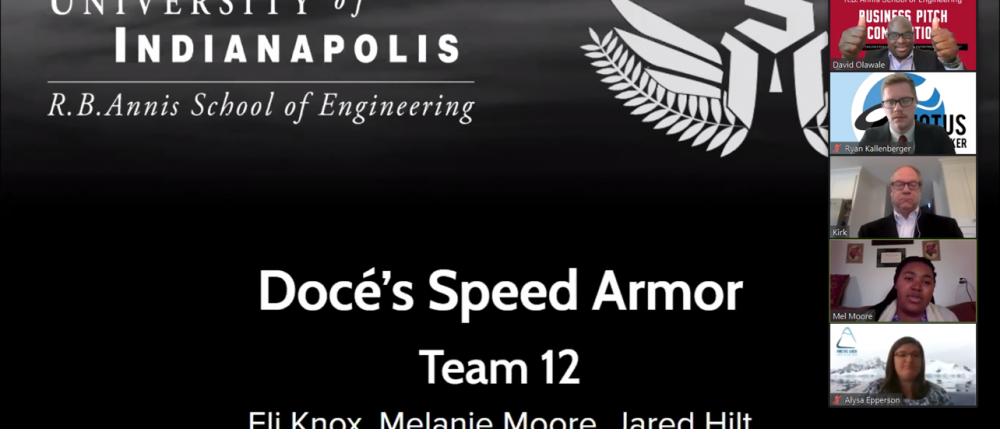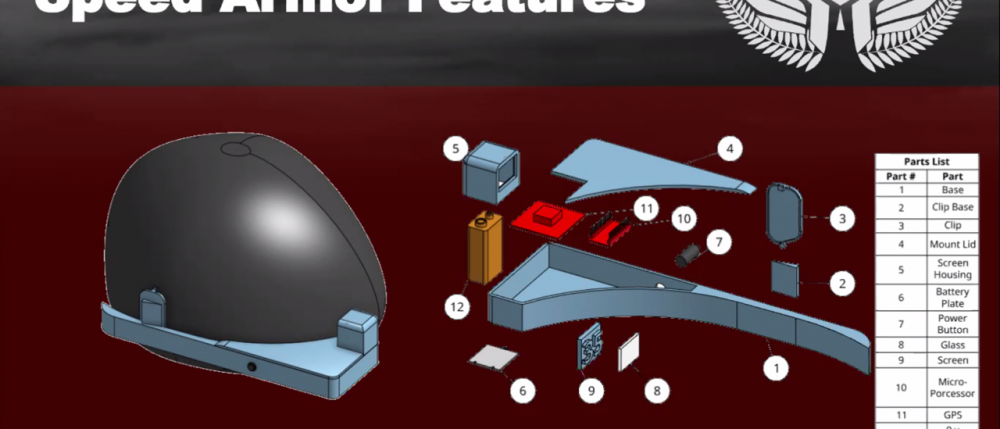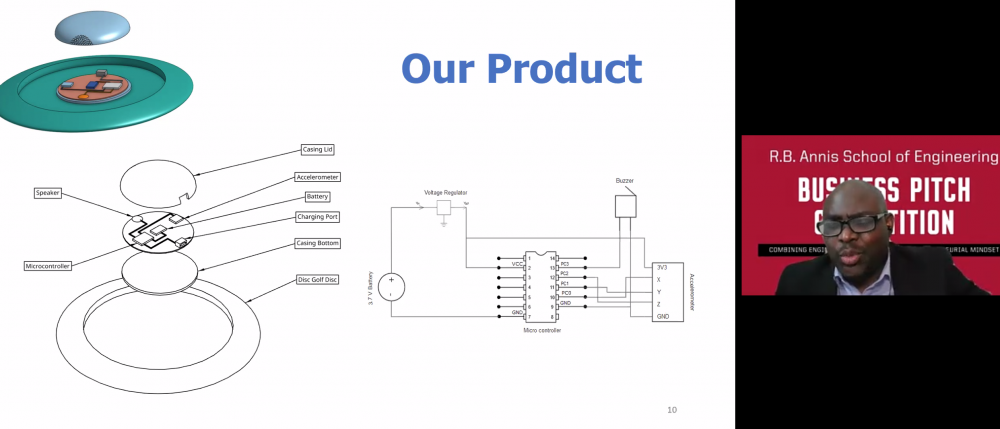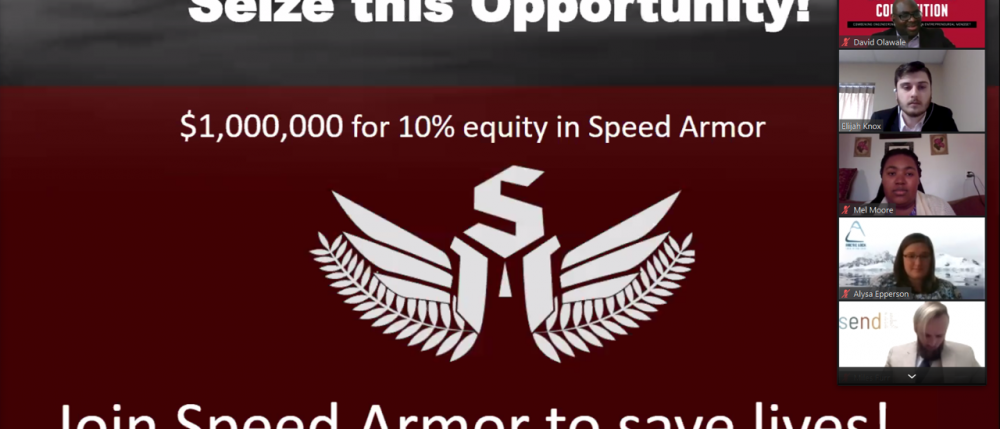2020 UIndy Engineering Business Pitch Competition goes virtual

The R.B. Annis School of Engineering (RBASOE) successfully held its 2020 Engineering Business Pitch Competition virtually on April 21, 2020. As part of the RBSAOE’s unique DesignSpine curriculum, students in the third year of the program work in interdisciplinary teams to design and pitch a product, process or service in collaboration with industry mentors.
This was the second year for the School to host the event, which was conducted via Zoom due to coronavirus (COVID-19) restrictions. Although it was an inconvenience, students took this opportunity to be innovative and entrepreneurial. Faculty responded by involving the student teams in the process of assessing each project’s progress and in determining what aspects of the project could be continued even though there will be no access to campus resources like labs and workshops. Based on the assessment and mutual agreement between the faculty and students, the projects were continued virtually.
There were over 60 participants who participated in the competition. Five multidisciplinary teams pitched their engineering projects and business models to eleven judges consisting of leaders from industry and UIndy.
“I enjoy working with the students and I am always impressed with their creativity and how polished their presentations are. I wish there was a program like the R.B. Annis School of Engineering when I was in engineering school,” said mentor Richard Calvert (Citizens Energy). The Indiana startup ecosystem was represented by judges from Elevate Ventures and Innopower.
The event showcased the strong collaboration between the RBASOE and other units in the University, including the Department of Art & Design.
Dr. David Olawale, assistant professor of engineering, said, “It has been great working with Prof. Rhonda Wolverton and her students from the Art & Design Department. The collaboration provided the engineering students the opportunity to work with students from a completely different discipline. They got to experience the value that other disciplines bring to the product development and commercialization process. They got to learn how to communicate effectively with other experts from a different discipline and they also developed an appreciation and respect for other disciplines. The contribution of the Art & Design teams in designing the logos, slide decks and websites brought the business aspects of the project to life for the technically-minded engineering students.”
Wolverton agreed, citing that “The engineering project has allowed my students to experience a portion of each of these steps.”
The top three winning teams pitched ideas for a food produce preservation system, a motorcycle head display system, and body cooling wear.
While the engineering student teams focused on customer discovery, design, prototyping, testing and business model development, they were ably supported by their colleagues from the Art & Design Department who worked on the branding and marketing aspects of the projects. This created a great experiential learning experience for all the students.
Alysa Epperson ’21 (industrial and systems engineering major, mathematics minor) discussed how “over the past nine months our team has been working on developing a personal cooling vest…We decided to focus on cooling athletes and outdoor workers. Students from the Department of Art & Design helped us create a name for our company, a logo, and other on-brand materials. The name we decided on was Arctic Lock. Arctic Lock was designed to be lightweight, fashionable, affordable, and to offer rapid and prolonged cooling.”
Marko Tasic ’21 (industrial and systems engineering major, mathematics minor) summed up his experience by crediting the competition with giving him the confidence to pursue his own ideas and identify and solve problems in the world. “My biggest takeaway from this project is that entrepreneurship is not some intimidating venture that you have to embark on alone. It’s a step-by-step process that you do with a team around you,” he said.

